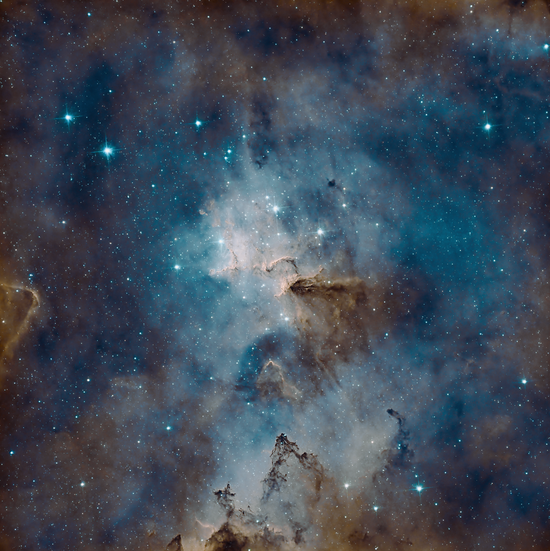The Soul Nebula: My Latest Deep-Sky Image from my Back Garden.
- Thomas McCrorie

- Sep 17, 2024
- 2 min read
Updated: Feb 25
Hey, me again! I took this image over a few nights in September 2024 from my back garden on the west coast of Scotland. This is my longest integration time so far with my new monochrome astronomy equipment. This image also has the designation of Westerhout 5.
Total Integration time: 9hours 25 min
Moon coverage: 95%
Location: Northern Hemisphere
Bortle: 4


The Soul Nebula or Westerhout 5:
This nebula is an emission nebula located in Cassiopeia. Several small open clusters are embedded in the nebula: CR 34, 632, and 634 and IC 1848. The object is more commonly called by the cluster designation IC 1848. (Source: NASA).
I also imaged this deep sky object as a two panel mosaic as show above!
I love the wonderful rainbow of colours I have managed to process out from this image. Normally, when you see this emission nebula processed, it tends to be in more traditional SHO or Hubble type colours (oranges, reds and blues), but I thought I would do it a little differently. This is one aspect of the hobby that makes it super creative. We all process our images in our own unique ways. The colours don't actually appear until I process the image using software like Pixinsight or photoshop. Otherwise, the final stacked image would just be a black image file with some dots for stars.
Other deep sky objects in Cassiopeia that I have taken images of are as follows: the Pacman nebula, Bubble nebula, the Soul nebula (shown above), and Melotte15, which is more commonly called the Heart of the Heart nebula, shown below.
Shown below are what the individual master images or master lights look like when I process them in Pixinsight. You will notice they are black and white as they were taken on my monochrome camera, but when I combine these images, they make one full colour image as you can see on the last image above. I will then process this image to produce the image you see above. It all sounds very complex, but once you get used to using the software for a while, it gets a little easier to do. Promise!
So, this hobby can become complex quite quickly, and the further you get into the hobby of astrophotography, the more you begin to know... how much you actually don't know!
As my experience grows and my astronomy equipment gets better, the most difficult part of the hobby comes from learning about the new equipment and learning how to process the image data, although, to be fair, the longer the integration time is, the easier the processing becomes. I think it would be fair to say this.
I will do another blog post on processing image data to show how this works.















Comments